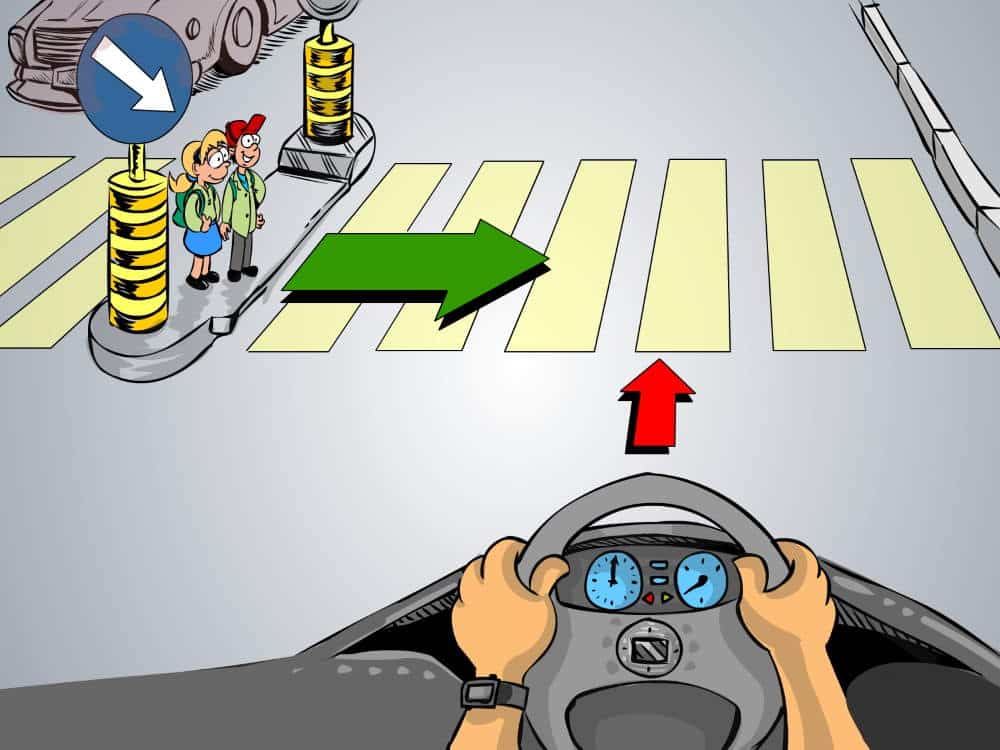Behaviour towards pedestrians
Right of Way for Pedestrians
Pedestrians must be allowed to cross the roadway in a safe and appropriate manner.
Pedestrian Crossings Without Traffic Control
At pedestrian crossings without traffic control, the driver must give way to any pedestrian who is either on the crossing or waiting in front of it and clearly intends to cross. The driver must slow down in time and, if necessary, stop to ensure they can safely allow the pedestrian to cross.

Junctions With Traffic Control
At junctions with traffic control, drivers turning must give way to pedestrians crossing the side street. This rule does not apply if traffic signals release traffic with a green arrow and no yellow warning light is flashing.
Outside of Designated Pedestrian Crossings
Outside of designated pedestrian crossings, pedestrians must give way to vehicles. However, on roads without pedestrian crossings, the driver must stop if necessary when pedestrians are waiting to cross.
Blind Persons
Unaccompanied blind persons must always be given the right of way if they indicate their intention to cross by holding up their white cane.
Overtaking School Buses
Drivers may only overtake marked school buses that are stopping with their hazard lights on slowly and with extra caution. If necessary, they must stop.
Public Transportation Stops
At public transportation stops, drivers must show consideration for persons boarding or alighting.
Closed Columns of Vehicles or Pedestrians
When closed columns of vehicles or pedestrians are crossing a roadway, they must not be interrupted. At junctions, they should be given the right of way wherever possible.
Crossing or Overtaking Pedestrian Columns
Crossing or overtaking pedestrian columns is only allowed at slow speed. If a vehicle needs to use the sidewalk, the driver must take special care of pedestrians and give them the right of way.



